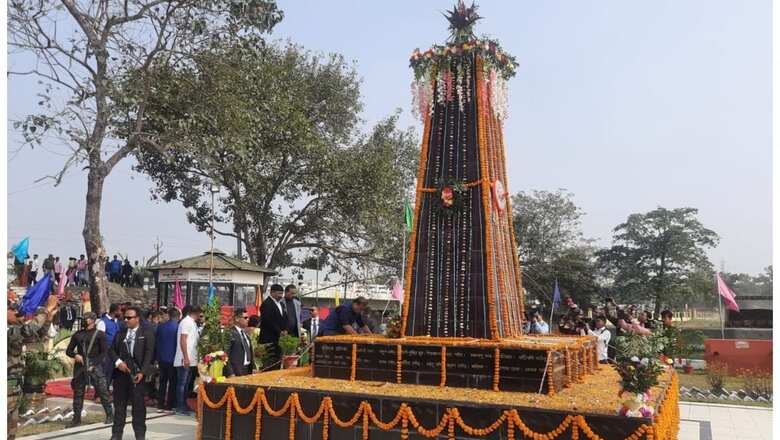
views
A golden history of India’s Independence movement is buried in Assam’s Patharighat, a town situated in Darrang district, located about 45 km away from Guwahti. It is the site of the Patharughat massacre, which occured on January 28, 1894 by the British during the peasant uprising, the day which is commemorated as the Krishak Swahid Divas.
The uprising, which most of us must have seen in Amir Khan’s Lagaan is the battle for revenue between the British and Indian farmers. The farmers of Patharighat, in Darrang district of Lower Assam revolted against the British Empire in January 28, 1894.
In the year 1833 the British Colonial government-imposed plough tax in Darrang district and an amount of Rs 3 was fixed as tax against every plough. In this way they had collected a sum of about Rs 41,000. The tax was later increased to Rs 5 making it unbearable for the farmers, who decided not to pay the unreasonable and illegal tax imposed on them.
A prominent historian and writer of Darrang district Nagendra Nath Sarma cited the incident, saying, “After refused by the British authority, the farmers had no option but to revolt.”
On January 28, 1894, all farmers gathered in a field at Patharighat. While the farmers were discussing on the issue in the meeting, Deputy Commissioner of Darrang JD Anderson, Superintendent of Police Barrington and SDO Remington reached the place and a huge force of police personnel accompanied them. The British officials clearly stated that British will not reduce the tax which triggered the farmers.
They started shouting against the British government, when situation became more tensed, following which SP Barrington ordered to fire and the police opened fire on the gathering present there. 140 farmers were killed on spot and about 150 were injured.
According to Nagendra Nath Sarma, “Though initially 140 farmers declared death in that incident more people died later. However, the British suppressed the incident and because of their conspiracy this brutality of British remained unknown for rest of the state and country.”
Probably after the incident, the British feared that if the news spread to other places there may be revolt. So, hurriedly they collected the bodies and buried in a single pit. following which it became a place of interest for both Hindus and Muslims.
The recognition and irony was such, that neither the state government nor any organization had taken any initiatives to pay proper tribute to these martyrs untill 2017. In 1994, AASU observed 100 years anniversary of this incident.
Sarbananda Sonowal was the leader of AASU by that time. After becoming CM of Assam, Mr. Sonowal officially arranged a special function to pay tribute to the martyrs officially and said that every student should know about this incident, about the Uprising of Patharighat.



















Comments
0 comment